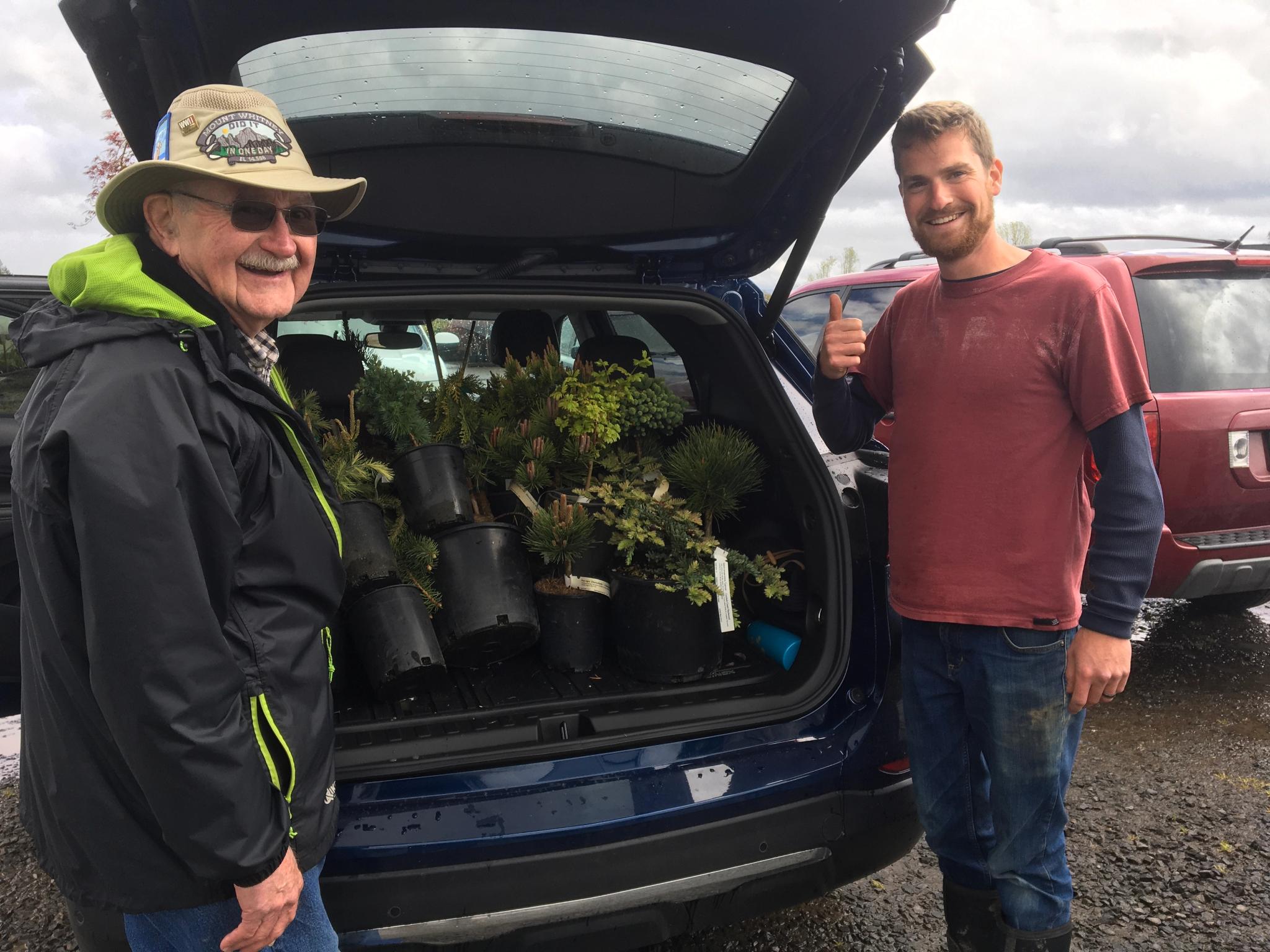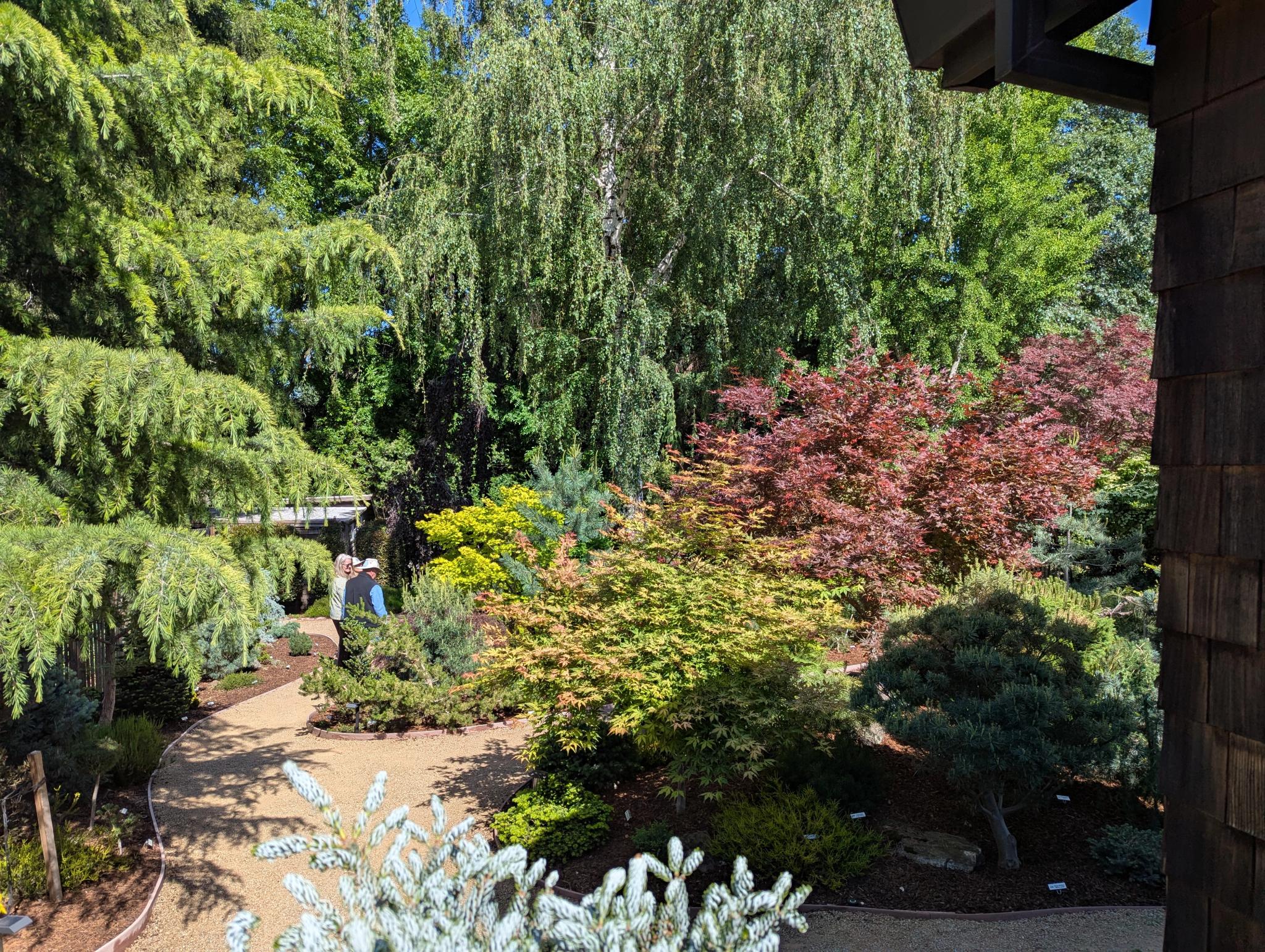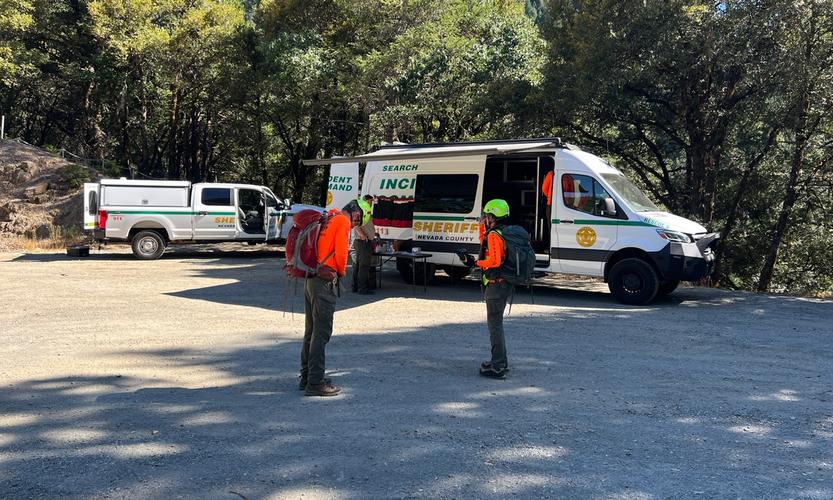Conifers Shine in Annual Soroptomist Garden Tour
May 21, 2025

Guests enjoy Conifer Hill, part of Nevada County Soroptimists’ Garden Tour on May 17th and 18th, 2025.
GRASS VALLEY — Gardeners from all elevations were wowed last weekend by the arboretum-quality landscaping at Conifer Hill, one of seven private gardens open to ticketholders as part of the Nevada County Soroptimists’ annual garden tour. Other standouts included an Italianate garden, a small, sunny, owner-designed, in-town treasure on a steep hillside, and a rural home with attractive firewise surroundings.
Featuring dwarf conifers, Bob and Patty Park’s “Conifer Hill” was a knockout. They bought the 5/8-acre location on the edge of Grass Valley in 1973 and built their cedar shake home in 1981. But it wasn’t until 2014 that their addiction to dwarf conifers surfaced.

Bob Park (left) and friend load roughly 50 young conifers for travel from Oregon to Grass Valley as Conifer Hill was being created. Photo by Patty Park.
Mostly on a whim, they attended an American Conifer Society (ACS) conference in Oregon that year. While exploring established conifer-centric gardens there, they discovered a network of knowledgeable, friendly, generous enthusiasts… and two fledgling “coneheads” were hatched!
What are “dwarf” conifers? While full-size conifers can easily mature at 100+ feet tall, dwarfs are slow growers that stand 1-5 feet tall when ten years old. (There are also darling “miniatures,” less than a foot tall by then, and “intermediates,” about 5-10 feet in height.) A quick peek at the ACS online database yields endless inspiration for a wide variety of shapes and shades that are ideal for smaller landscapes.
Home from Oregon with several gift plants, they began ripping out the mature English strolling garden they had already carefully created. Multiple trips to Oregon nurseries ensued; they returned home regularly, car bulging with young plants – a total of 444 over time! (Happily, trips to Oregon are not required to add interesting conifers to a property – regional nurseries are more and more attuned to this option.)
The Parks’ then-new conifer garden made its public debut on the Soroptimist tour in 2018. Though still young, even then it was an inspiring vision. Last weekend, the amazing tapestry was in its glory, dramatically matured, demonstrating a beauty that doesn’t rely on flowers.

Bob Park (back to camera) shares Conifer Hill with guests.
Can a conifer-centric garden be interesting? Well, it’s not the Fourth-of-July spectacle of bloom to which some gardeners aspire. Instead, the Parks’ landscape is rich in texture, shape, and surprising variation in color. Long-established mature trees (not all of them conifers) frame a series of irregularly shaped beds with a show-stopping variety of colors: blue-green, gray-green, and spring green, sometimes edging off into yellow or bronze. Some trees feature short, stiff, bottlebrush-like needles; others are long and twisted, or even soft. Some conifers (e.g. ginkgoes and larches) turn golden in the fall, losing their leaves. A variety of cones can be spotted (watch for little red ones!). The collection includes rare conifers and others that are cultivars of well-known species. Conifer Hill reflects the wide range of possibilities.
The Parks enthusiastically point out that these trees genuinely qualify as low-maintenance. Bob says, “Caring for conifers is much easier than most other landscape plants.”
Multiple graceful Japanese maples and a scattering of blooming plants contribute to the overall effect, harmonizing in a wonderful garden experience, inspiring gardeners from the foothills to the peaks.
Note: For readers who’d like to explore this approach on their own property, there are options for every USDA zone. Start learning at www2.conifersociety.org/general/custom.asp?page=learn-conifers
Featured Articles

Sheriff’s Office Accepts $60,000 Grant for New Search and Rescue Team →
December 2, 2025
Sierra County to enhance emergency response with grant-funded search and rescue team initiative.
Confusion Surrounds Release of the Plumas County Grand Jury’s Report →
December 4, 2025
WCB Considers Grant for Sierra Valley Tribal Land Purchase →
Updated November 22, 2025
Downieville Fire Auxiliary Hosts Annual “Holiday on Main” Event Saturday →
December 2, 2025
Flood Forces Temporary Closure of Sierra Hardware →
December 3, 2025
